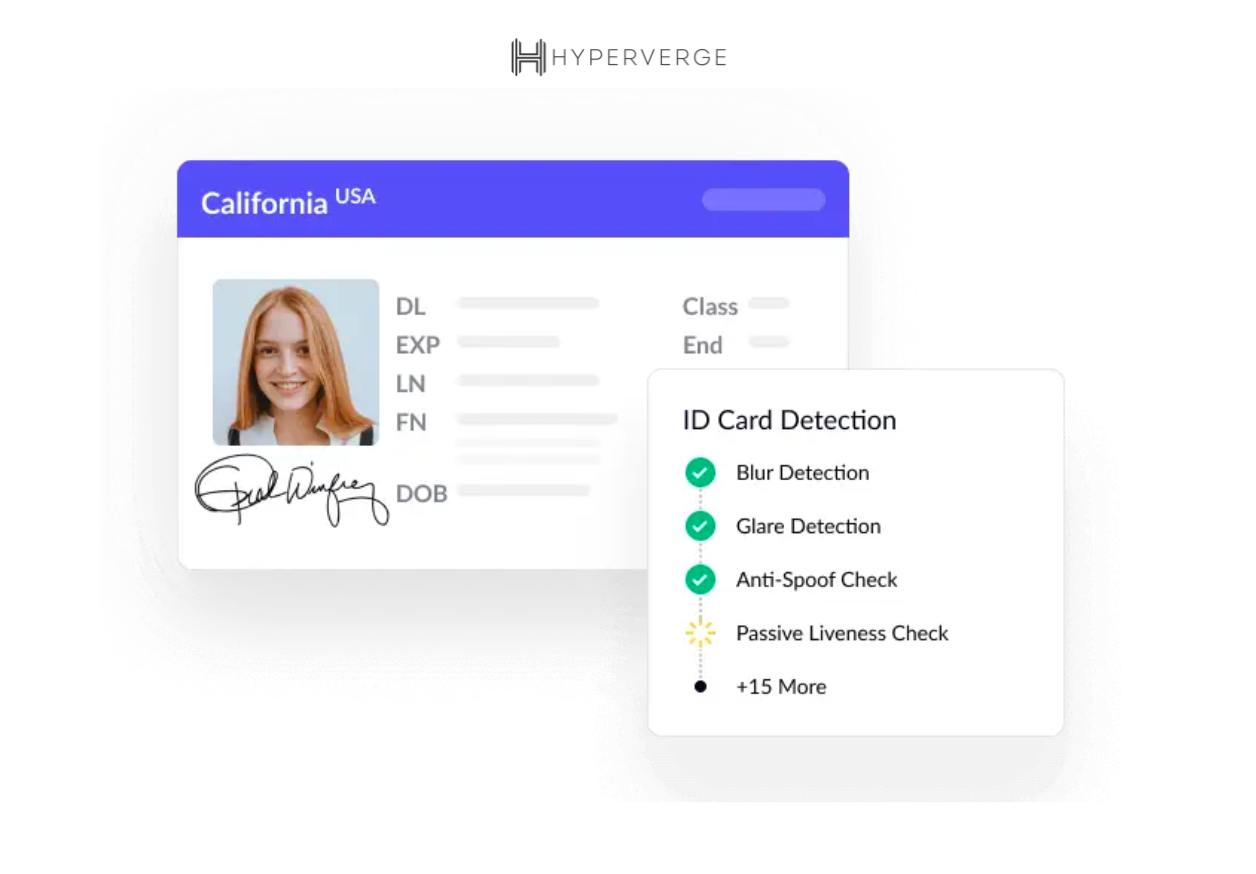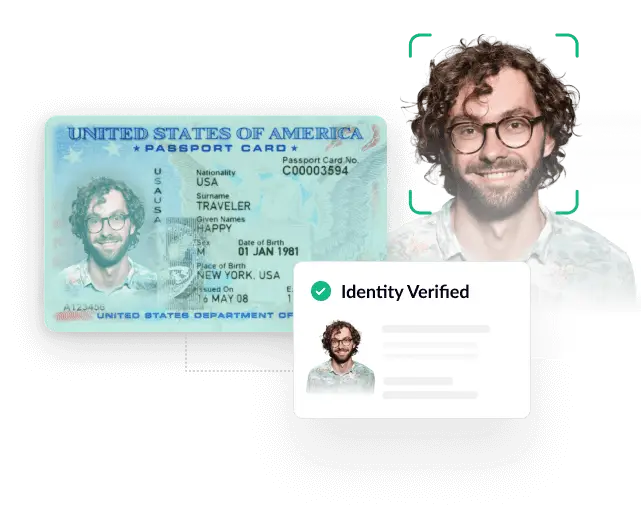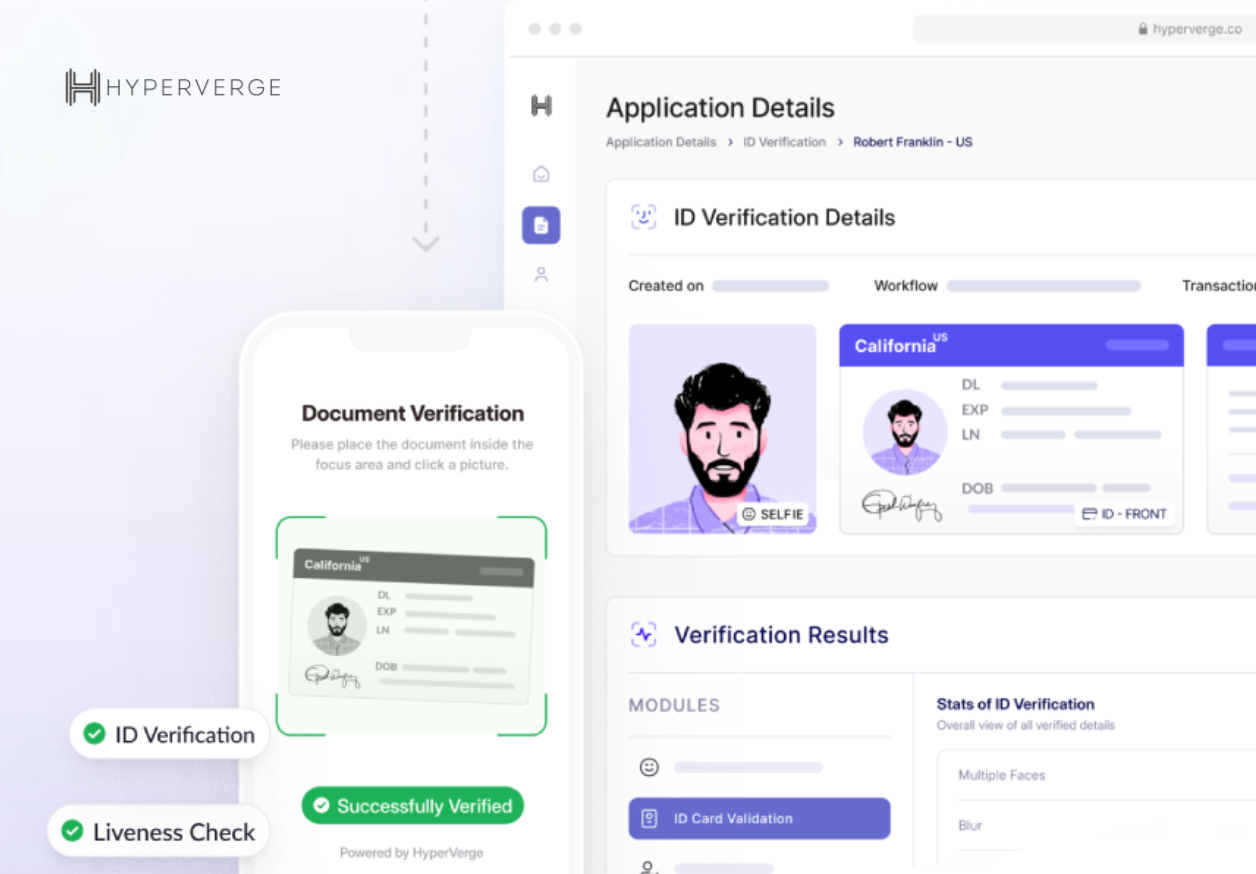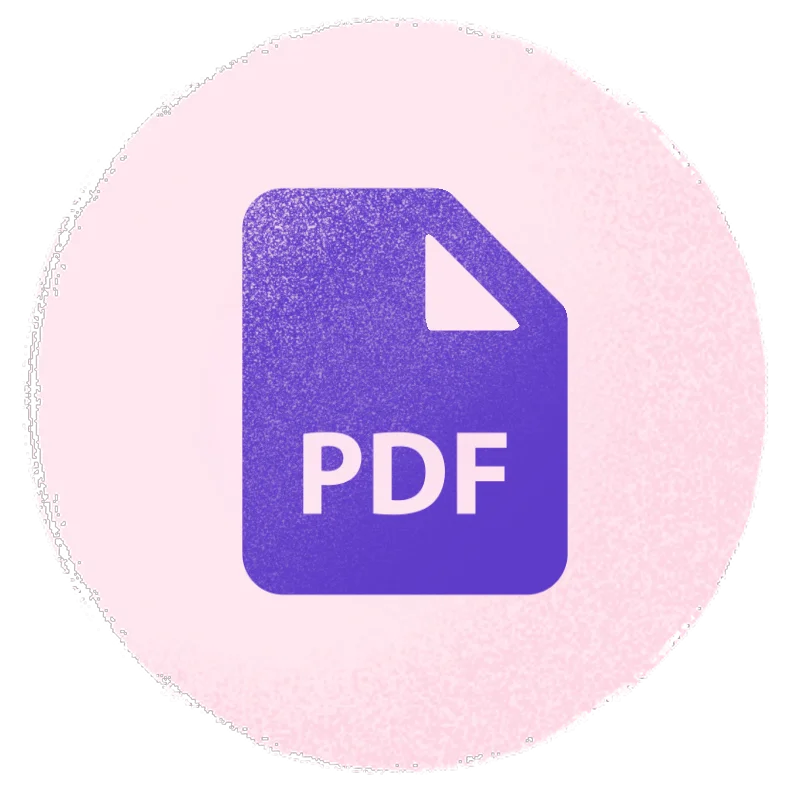Document verification is an increasingly critical component in our digitally-connected world. Expected to burgeon to a $15 billion industry by 2024, it’s grown 20 percent since 2019, driven by demands in anti-money laundering and customer identity verification.
Furthermore, the banking sector is anticipated to process the highest volume of document checks, with an estimated 37 billion verifications in 2024 alone. This accounts for over half of the global identity verification market, largely credited to the rise of digital-only banking institutions. Technologies such as facial biometrics, machine learning, and artificial intelligence are propelling this market forward.
In this blog, we’ll explore how document verification works, its integration with other identity verification processes and methods, and the industries poised to benefit the most from this tried-and-true document verification software. Let’s get started!
- What is document verification?
- Why is document verification important?
- How online document verification works
- Physical vs. digital document verification
- Advantages of online document verification
- Industries utilizing online document verification
- Real-world example: U.S. passport verification
- Summing up
What is Document Verification?
Document Verification is a critical process where businesses, government agencies, and financial institutions verify the authenticity and validity of documents presented to them. From passports to driver’s licenses to bank statements, the goal is to confirm that a document is genuine, unaltered, and not counterfeit in any way.

Why is Document Verification Important?
Businesses implement Document Verification to build trust with customers and protect themselves against identity fraud, breaches, and theft. It’s crucial during the customer onboarding process, helping companies to swiftly and securely authenticate new users. This reduces the risk of theft and security breaches, particularly in internet-based services.
Read more: How to identify and prevent document forgery.
Document Verification also acts as a compliance safeguard, ensuring that businesses meet regulatory requirements while building a strong defense against fraud. This protects the business and maintains the digital ecosystem’s integrity, ensuring that genuine customers are onboarded quickly.

How Does Online Document Verification Work?
Online identity document verification is a robust process that encompasses several crucial steps to ensure that personal identity documents are authenticated efficiently and accurately.
Step 1: Document Collection & Data Capture
The process kicks off when customers submit high-quality images or videos of their ID documents. This is where AI and algorithms step in to identify and pre-process the data, preparing it for the next steps. Enhancements like adjusting document boundaries and improving image quality are vital to ensure that data extraction is as accurate as possible.
Step 2: Data Extraction
Here, the required data is extracted from the documents. This is a selective process, meaning that only relevant information is pulled, ignoring unnecessary details. An AI-based OCR (Optical Character Recognition) solution is instrumental in converting the document into structured data, which can then be used for further processing.
Read more: What is OCR technology?
Step 3: Document Validation
In this phase, it’s crucial to establish the validity of the document and the information it contains. The extracted data is compared against other databases to verify its authenticity. For example, a bank may need to further verify identity documents if a loan applicant has outstanding debts. This step is essential in reducing the risk of fraud and identity theft. This step may include:
To explore the range of documents typically accepted, learn more about ID proof verification documents.
Step 4: Data Authentication
Finally, any documents that raise red flags during the verification tests undergo a manual review process, often referred to as human-in-loop verification. This step combines automated checks with human oversight to ensure that the documents are indeed valid and the information they contain is accurate.

Physical Document Verification vs. Digital Document Verification
Physical document verification is an old practice where a person’s identity and accompanying documents are verified in person. This method often involves a face-to-face meeting and the manual inspection of paper documents to confirm their validity and authenticity. Although this method has a long history, it is time-consuming, prone to human error, and less secure due to the risk of losing, stealing, or forging physical documents.
In contrast, digital document authentication utilizes electronic means, such as scanning documents and using specialized document verification software. The advantages are clear: it’s faster, more accurate, and secure.
Businesses and individuals are increasingly opting for digital verification methods to ensure a higher level of security and efficiency. The shift to digital has been further accelerated by the need to verify documents for online services, where physical verification isn’t feasible.
Understanding this shift is crucial, check out our in-depth guide to digital identity verification to make the right choice for your needs.
Industries that Use Document Verification
Online document verification is essential for safeguarding transactions and maintaining compliance for several industries.
Financial Services
In the financial realm, this technology ensures customer authenticity for account opening process, services and loan processing. Banks and institutions prioritize document verification to build a secure financial environment.
For more on how financial services employ these methods, check out HyperVerge’s identity verification solution for financial institutions.
Healthcare
Healthcare providers use document verification to verify patient identities, crucial for accurate medical treatment and privacy. Patient IDs, insurance cards, and other documents are verified to prevent identity theft and fraud. This process helps healthcare providers maintain the integrity of electronic health records and enhances patient safety.
E-Commerce
Identity verification for e-commerce platforms secures the identity of both sellers and buyers, thus preventing fraud. During account creation or high-value transactions, users may be required to upload government-issued IDs or relevant documents for proof of address verification. This helps prevent fraudulent activities such as account takeovers and ensures that the person making a purchase is the legitimate account holder.
Gaming and Gambling
Particularly in the case of online gaming and gambling, document verification is employed for age verification and to comply with legal regulations. Users may need to submit proof of age, such as a driver’s license or ID card, during the registration process. This ensures that only individuals of legal age engage in activities like online gambling. Document verification helps gaming platforms maintain regulatory compliance and fosters a responsible gaming environment.
Crypto and Blockchain
Document verification in the crypto sector is essential for KYC and AML compliance. Exchanges and wallets use it to confirm identities, combat fraud, and foster trust within the decentralized blockchain ecosystem. As cryptocurrencies intertwine with conventional finance, document verification serves as a critical bridge ensuring secure and regulated transactions.
Benefits of Online Document Verification
Online document verification provides a range of benefits that simplify and secure the process of authenticating personal and official documents. Here are some of the key benefits:
Enhanced Security
Online verification uses advanced technologies like AI to verify documents online and ensure that the documents are not fraudulent. This technology can detect even the slightest discrepancies or attempts at forgery that might be missed during a manual check.
Speed and Efficiency
The process is significantly faster than the manual verification processes. What used to take days or weeks can now be completed in real-time or within a few minutes, greatly accelerating the onboarding process for businesses and improving the user experience for customers.
Regulatory Compliance
Online document verification systems are designed to comply with global and regional regulations, such as KYC (Know Your Customer) and AML (Anti-Money Laundering), helping businesses to meet legal requirements effortlessly.
Accessibility
Customers can verify their documents from anywhere, at any time, as long as they have internet access. This convenience opens up services to a wider audience, including those in remote or underserved regions.
To ensure that you make the right choice when selecting a verification solution, read our comprehensive guide on how to choose the best identity verification solution.
Real-world Example of Document Verification: The U.S. Passport
The verification of a U.S. passport is a critical process, often done when applying for services such as a driver’s license or when traveling. Below is a step-by-step explanation of the document verification process for a passport in the U.S.:
- Check the Personal Information: Verify that the personal information on the passport matches the information provided by the individual. This includes checking the name, date of birth, passport number.
- Examine the Photo: Ensure that the photo on the passport looks genuine and matches the physical appearance of the person presenting it. Look for signs of tampering or alterations.
- Review the Passport Expiration Date: Check the expiration date to ensure the passport is still valid. Some documents may require a valid passport that extends beyond the expected duration of stay.
- Look for Watermarks and Holograms: US passports have various security features like watermarks and holograms. Tilt the passport to observe changes in the holographic images and check for watermarks embedded in the paper.
- Verify the Passport’s Type and Color: Ensure that the passport corresponds to the correct type (e.g., regular, official, or diplomatic) and matches the appropriate color for its type.
- Use UV Light: Some security features are only visible under ultraviolet (UV) light. Use a UV light source to check for hidden elements or markings.
- Check the Passport Number Against Databases: Depending on the nature of your blog and the permissions you have, you may want to verify the passport number against relevant databases. However, access to such databases is typically restricted and subject to legal considerations.
- Scan the Machine Readable Zone (MRZ): The MRZ is the two-line code at the bottom of the passport’s biographical page. Use a passport scanner or OCR software to extract and verify the information from the MRZ.
- Use Official Resources: Cross-reference the passport details with official government resources
Each step in this process is designed to ensure the integrity and security of the U.S. passport as an identity document. Tried and tested global document verification software, like HyperVerge, can conduct document verification automatically and accurately to safeguard your business.
Summing Up
In summary, online document verification is a transformative tool that enhances the security and efficiency of identity authentication. Its ability to integrate advanced AI technologies provides a robust defense against fraud. This, coupled with its speed and global accessibility, allows for a seamless and user-friendly experience that far surpasses traditional methods.
For a closer look at how cutting-edge identity verification solutions can empower your business, streamline your processes, and protect your operations, explore what HyperVerge has to offer. Discover HyperVerge’s document verification solutions or take a demo to secure your digital future today.





















